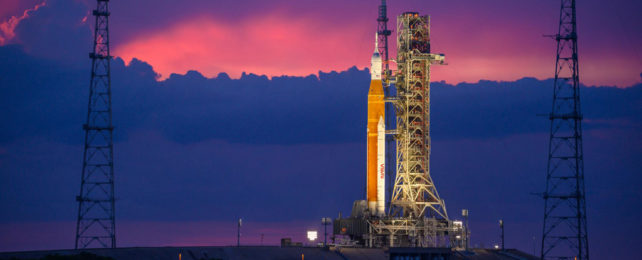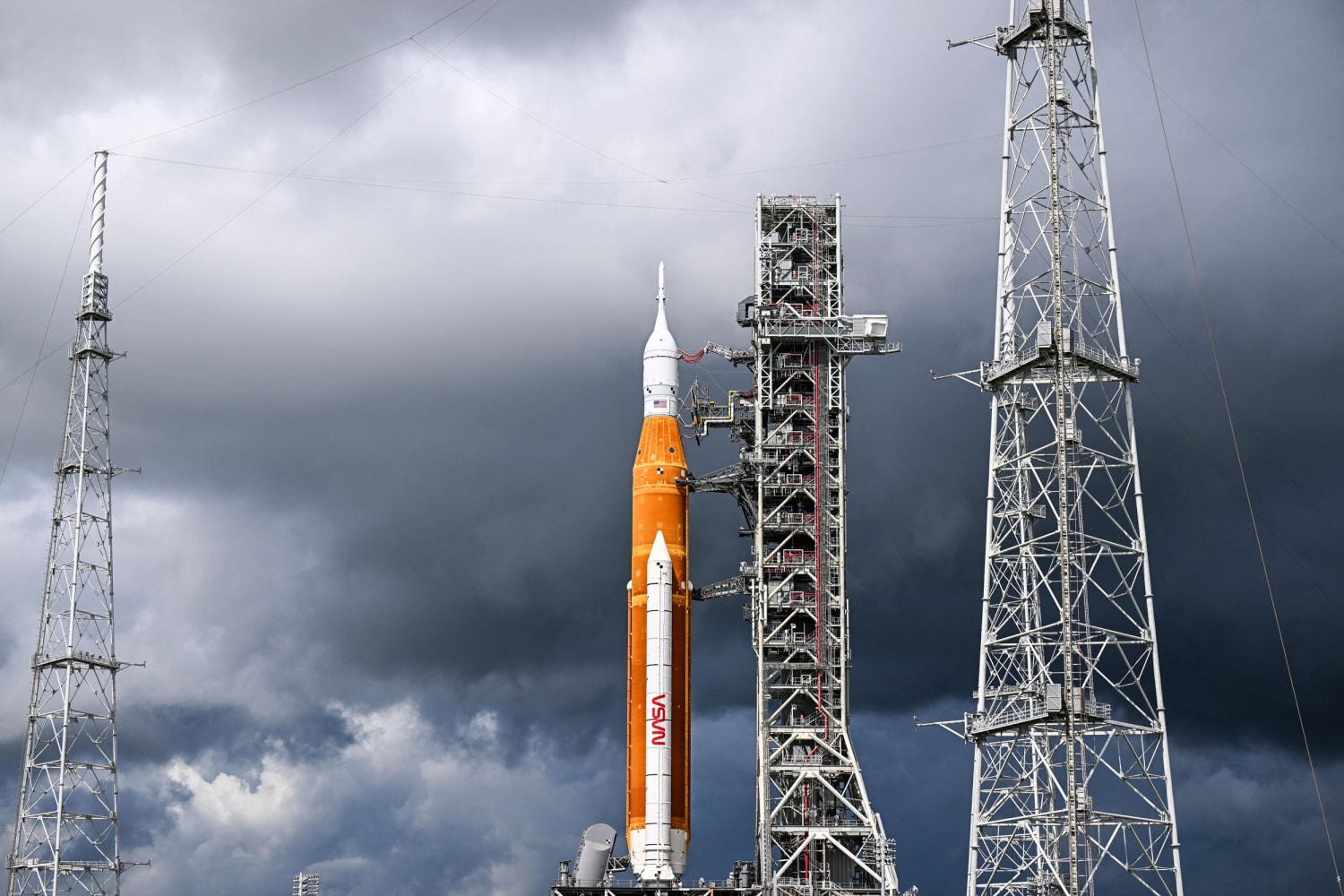On September 3rd, NASA made the difficult decision to cancel the second attempt to launch its new 30-story rocket and send its uncrewed test capsule to the Moon. The cancellation was due to the detection of a fuel leak near the base of the rocket as ultra-cold liquid hydrogen was being pumped in. This was a major setback for the Artemis program, which aims to return humans to the Moon and pave the way for future missions to Mars.
The launch was highly anticipated, with millions of people around the world and hundreds of thousands on nearby beaches eagerly awaiting the historic event. The Space Launch System (SLS), the most powerful rocket ever built by NASA, was set to carry the uncrewed Orion spacecraft on its first test flight, known as Artemis I. The mission was intended to test the spacecraft’s capability to transport humans and cargo to the Moon, as well as to demonstrate the SLS’s ability to launch large payloads into deep space.
Despite the efforts of NASA engineers to troubleshoot and fix the fuel leak, the issue persisted and the launch director made the decision to cancel the launch. In a statement, NASA acknowledged the disappointment of the millions of people who were looking forward to the launch and reassured them that the agency remains committed to the Artemis program and to the goal of landing the first woman and next man on the Moon by 2024.
The cancellation of the launch highlighted the risks and challenges involved in space exploration, even with the most advanced technology and expertise. NASA officials stated that they will conduct a thorough investigation into the cause of the fuel leak and take appropriate measures to prevent similar incidents from occurring in the future. Despite the setback, NASA will continue to work towards its ambitious objective with determination and perseverance.

Space Launch System on the launchpad at NASA’s Kennedy Space Center on 30 Aug. 2022.
On the day of the launch, an estimated 400,000 people had gathered near the launch site to witness the historic event, despite the area being closed to the public. The launch was highly anticipated, as it was set to be the most powerful vehicle ever launched by NASA. The Space Launch System (SLS) was designed to carry the uncrewed Orion spacecraft on its first test flight, known as Artemis I, to demonstrate its ability to transport humans and cargo to the Moon.
However, the initial launch attempt on Monday was halted after engineers detected a fuel leak and a sensor showed that one of the rocket’s four main engines was too hot. After troubleshooting and resolving these issues, the launch director Charlie Blackwell-Thompson gave the go-ahead to start filling the rocket’s tanks with cryogenic fuel early on Saturday.
The process of pumping about 3 million liters of ultra-cold liquid hydrogen and oxygen into the spacecraft soon hit problems, with engineers detecting a fuel leak near the base of the rocket as the fuel was being pumped in. Despite multiple attempts to address the issue, the fuel leak persisted, leading the launch director to cancel the launch and waive off the Artemis I mission.
The cancellation of the launch was a major setback for the Artemis program, which aims to return humans to the Moon and pave the way for future missions to Mars. NASA officials have stated that they will conduct a thorough investigation into the cause of the fuel leak and take appropriate measures to prevent similar incidents from occurring in the future. Despite the setback, NASA remains committed to the Artemis program and to the goal of landing the first woman and next man on the Moon by 2024.

No new date for another try was immediately announced.
Following the cancellation of the Artemis I launch due to the fuel leak, there are two backup opportunities on Monday or Tuesday. If the launch does not occur during these backup windows, the next available launch window will not be until September 19th, due to the Moon’s position.
The primary purpose of the Artemis I mission is to verify the safety of the Orion capsule, which sits atop the SLS rocket, for future human missions. The uncrewed mission will also test the spacecraft’s ability to navigate and communicate in deep space, as well as gather data on the space environment.
In place of human astronauts, mannequins equipped with sensors will be onboard the spacecraft to record acceleration, vibration, and radiation levels during the mission. This data will help NASA engineers optimize the spacecraft’s design for future missions.
The Artemis program is a key component of NASA’s long-term plan to establish a sustainable presence on the Moon and eventually send humans to Mars. Despite the delay of the Artemis I launch, NASA remains committed to this ambitious goal and will continue to work towards achieving it with determination and perseverance.

Apollo’s twin sister
After the Artemis I launch, the spacecraft will take several days to reach the Moon, with its closest approach being about 60 miles (100 kilometers). The capsule will then fire its engines to reach a distant retrograde orbit (DRO) of 40,000 miles beyond the Moon, which is a record for a spacecraft rated to carry humans. The mission is expected to last approximately six weeks and one of its main objectives is to test the capsule’s heat shield, which is the largest ever built at 16 feet in diameter.
On its return to Earth, the spacecraft will have to withstand speeds of 25,000 miles per hour and a temperature of 5,000 degrees Fahrenheit (2,760 degrees Celsius) as it re-enters the atmosphere. The Artemis program is named after the twin sister of the Greek god Apollo, who was the namesake of the first Moon missions. Unlike the Apollo missions, which sent only white men to the Moon between 1969 and 1972, the Artemis missions will see the first person of color and the first woman step foot on the lunar surface.

The Artemis program is a significant undertaking, with a government audit estimating its cost to grow to $93 billion by 2025, with each of its first four missions costing around $4.1 billion per launch. The next mission, Artemis 2, will take astronauts to the Moon without landing on its surface, while Artemis 3 is planned to land on the Moon in 2025 at the earliest. The program aims to establish a sustainable presence on the lunar surface, with later missions envisioning a lunar space station.
According to NASA chief Bill Nelson, a crewed trip to Mars aboard the Orion spacecraft, which would last several years, could be attempted by the end of the 2030s. The Artemis program represents a significant step forward in humanity’s exploration of space, with the potential to unlock new discoveries and technologies that could benefit all of humanity.








